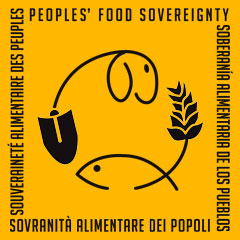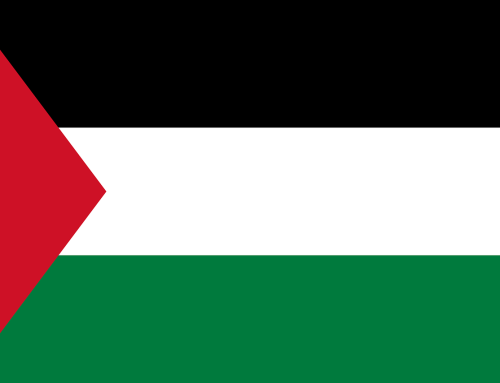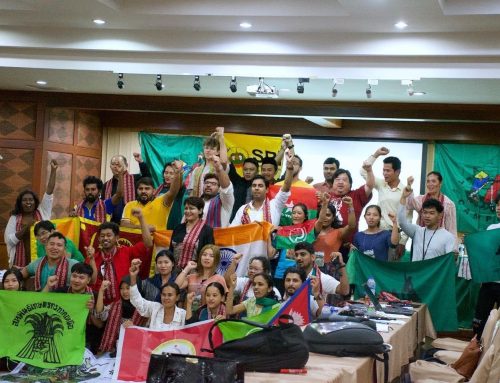 Story by Russ Grayson, March 2015
Story by Russ Grayson, March 2015
WHEN Sydney University fair food educator, Alana Mann, suggested we write our own perspectives on the Nyeleni Declaration on agroecology I didn’t know where to start. Not being a farmer there was little I could say about that other than point out the good work of people and organisations like Regrarians, Alan Savory and those innovative Australian rural land manager-farmers whose names I no longer recall from my days as a Landcare educator at an urban city farm.
So, I thought the most authentic perspective that I could take would be to relate the practice of agroecology to my own habitat — the big city. Here, practicing agroecology is very different to practicing it on a farm. There’s a difference in scale and intent — scale, because agroecology in the city is practiced in back yards and community food gardens; intent, because whereas farmers produce food grown in bulk to sell, urban agriculturists grow some of what they eat for their own consumption or, occasionally, to swap with others. This urban food gardening is what we sometimes call ‘garden agriculture’.
I guess that in the city we need a broader, more comprehensive understanding of argoecology, one that includes the entire food supply chain.
That difference I mention above, though, hides a commonality. And this is that the practice of agroecology for whatever purpose and at whatever scale involves approaches that take care of the land and the waterways while meeting the needs of people. Good farming, whether commercial or urban subsistence, is based on good soil and avoiding the pollution of waterways.
An urban agroecology
Part of my work, both income-producing and voluntary, had been in stimulating the practice of community gardening as a means of accessing good food and building a sense of place, community and belonging.
For me, the big picture context for this is what we know as food sovereignty, which is about consumer control over the food people eat and their freedom of choice of that food, among other things. Associated is that subset of food sovereignty that we call food security — access to good food, year-round, sufficient to support an active life. It is also about encouraging cooperation in communities to create resilient, convivial cities that are places of opportunity.
This work has involved advocacy and education, and part of that education component has been about community groups taking responsibility for an area of land, no matter how small it might be, and adopting gardening practices that improve the soil, minimise water needs and that make use of the seed of food crops that have been saved, perhaps swapped with other gardeners and replanted the following season. That, the practice of seed saving, has developed as a follow-on educational component to the skills of community and home gardening and, in Sydney, it is a skill that has been spread by the city’s seed saving trainers — Jane Mowbray, Emma Daniell and Robyn Williamson.
A different approach
I guess all of this is a different appreciation of agroecology than you might find among farmers. In the city, the social component is very important when it comes to working with food and communities. Maybe, here, we should talk about a socio-agroecology because it is cooperation that makes it happen in instances other than home gardening.
This raises what, for me, is an element of urban agroecological practice that might not be so apparent in its rural form — the distribution component of the urban food supply chain.
It is the continuum of production > distribution > consumption that brings together the rural and the urban in this food supply chain. I often expand on it this way: production > (processing for some foods) > distribution > consumption > food waste reuse — because those added components are urban functions and roles. Of these, distribution is important although it might not always be considered a core element of the agroecological approach.
Why it is important in any urban approach to agroecology is because engaging in food production is not often an urban possibility. Lack of access to growing space, lack of skill and time poverty make growing some of your own food a non-option for a great many urban people. That’s where distribution comes in, and that works best where the food products distributed are those grown by farmers practicing agroecology and those farming in the urban food bowl — the region around a city capable of producing much of its fresh food needs. Supporting those urban food bowl farmers grows the regional food economy with all the downstream economic and livelihood opportunities that generates. That gets back to what I wrote before, about cities being places of opportunity.
This isn’t wishful thinking because we have smart people equipped with the necessary entrepreneurial mindset who are, right now, making this happen. Think Brisbane Food Connect, Sydney’s OOOBY (Out of Our Own back Yards), Melbourne’s CERES Good Foods — all versions of the CSA model — Community Supported Agriculture — linking regional farmers to urban eaters in a way that the supermarkets can’t do. Then there’s the other ways citizens are exercising their option for good food — affordable organics buying groups and member-owned food co-operatives.
To me, these parallel food systems‚ parallel to the mainstream food supply chain that flows through the supermarket duopoly, are a core part of that socio-argroecology I mentioned before.
The declaration
I see these urban models linking to statements in the Nyelini Declaration such as building food systems that create new rural-urban links, promoting local markets for local products and the developing of alternative financial infrastructure/institutions/mechanisms that support producers and consumers.
Cities are productive places whose primary function is exchange of goods and services, exchange of knowledge and information, practices and ideas. They are places where people go to to find the opportunities cities offer.
Here, we can support the types of exchanges that happen through the food supply chain at the same time that those with the time and access can engage in small scale production. For even if that is only growing a small container garden on your apartment balcony, apply a little imagination and you can see the link between how you manage your urban microgarden and how an agroecological farmer manages their land. Apply a little more imagination and you start to see the connections between our urban food aspirations and those described in the Nyeleni Declaration.
When it comes to the Declaration, in the city we are different, but we are also the same.
[button_link url=”http://www.foodsovereignty.org/forum-agroecology-nyeleni-2015/” target=”blank” style=”” title=”” class=”” id=”” onclick=””]View the Declaration of the International forum for Agroecology, Nyeleni, Mali, 27 Feb 2015[/button_link]



